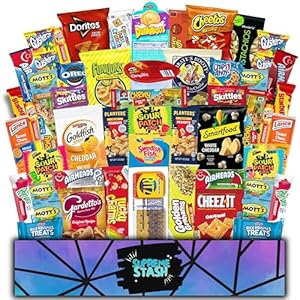
In the early 1970s pizza was still a mostly local food in the United States, though national chains like Pizza Hut and Domino’s were beginning to expand. By the 1980s their reach was undeniable. In the New Jersey suburbs where I grew up, where pizza parlors were very common, new outlets for these chains started appearing. At first they were curiosities and then quickly became common alternatives to neighborhood pizzerias. The shift showed how quickly pizza had gone from local fare to a national business.
By 1985 Pizza Hut was the largest pizza chain in the country and one of the top quick service brands overall, trailing only McDonald’s but rivaling Burger King and KFC. After PepsiCo’s 1977 acquisition, Pizza Hut had surged past 3,200 stores and was driving strong profits. Domino’s was smaller but expanding at breakneck pace, adding 954 new locations in 1985 for a total of nearly 2,900 stores and more than a billion dollars in sales. Its thirty-minute delivery promise gave it an edge against Pizza Hut’s dine-in model. McDonald’s remained the giant of quick service, but the rise of pizza showed that burgers were no longer the only game in town.
When McDonald’s tested pizza in the mid 1980s with the McPizza it confirmed that the category had grown too big to ignore. If McDonald’s saw potential, others would follow. For McDonald’s, pizza was both a new menu experiment and a defense against a rival category that was winning over families and group diners. Soon Taco Bell joined in, launching the Pizzazz Pizza in 1985. That move showed how quickly the pizza trend pulled in brands far outside the traditional slice business.
By the mid 1980s Taco Bell was thriving. Sales had jumped more than 30 percent in 1984, pushing close to a billion dollars in revenue, and the chain was adding hundreds of new stores each year under PepsiCo ownership. The company was also repositioning itself, moving beyond the niche of “Mexican fast food” to appeal to mainstream tastes. Not a chain that had landed in NJ at this point, I was still become very aware of Taco Bell from national advertising and word of mouth. Campaigns like “Make a Run for the Border” emphasized fun and accessibility, while menu items leaned on ingredients like beef, cheese, and tomatoes that overlapped with burgers and pizza. That overlap mattered, since it gave Taco Bell a path to appeal to customers who might never have sought out tacos on their own.
The Pizzazz Pizza fit that strategy. Instead of dough, the base was a fried flour tortilla already in daily use for tostadas and taco salads. Staff added beans, beef, tomato sauce, cheese, olives, green onions, and diced tomatoes, then finished it under a broiler. Ads promoted it as “cheesy like a pizza but really crisp and light.” The tortilla base made it distinct from traditional pizza while allowing Taco Bell to build the item with existing kitchen equipment. Unlike McDonald’s, which had to install new ovens for its McPizza test, Taco Bell kept costs low and service times fast by adapting what was already in place.
The PepsiCo connection gave the experiment another dimension. The company now owned both Pizza Hut and Taco Bell, but the two brands operated in very different ways. Pizza Hut relied on full kitchens, dough proofers, and dine-in service, while Taco Bell’s smaller stores could not support that model. The Pizzazz Pizza became a hybrid solution, borrowing the idea from Pizza Hut but executing it in a uniquely Taco Bell way.
Despite the careful planning, the product stumbled. Customers were unsure what to make of it. The fried tortilla gave it the look of pizza but not the taste or texture people expected. For Taco Bell regulars it felt out of place, more than a twist on tacos, but not quite its own category.
I want to take a moment to talk about the name itself. Pizzazz, which sounds a lot like pizza, it an actual word that can trace its origins back to 1937. It is most associated with show business and it means flair, vitality, or zest. It also happened to have the word pizza in it, so its a fun bit of marketing.
Unfortunately, while it might have been a fun name, it also created bigger problems. An Ohio company called Pizzazz Pizza & Restaurant sued Taco Bell in 1985, claiming infringement. The court eventually sided with Taco Bell, but the ruling also found “pizzazz” too descriptive to be protected as a trademark, underscoring that the name lacked strength. Focus groups had originally pushed Taco Bell’s ad agency toward Pizzazz Pizza instead of the company’s first choice, Mexican Pizza. After the legal fight and lukewarm sales, Taco Bell decided it was time for the Pizzazz Pizza to go, but that didn’t mean the idea would be retired.
In 1988 the product was renamed to their original choice, the Mexican Pizza. Olives and green onions were dropped, the build was simplified, and the connection to Taco Bell’s core menu was clearer. The rebrand and new name gave the item staying power, something the short-lived Pizzazz Pizza never achieved. Doing better than its predecessor, it evolved into a comfort item for loyal customers and eventually carried a nostalgia factor that helped fuel its return decades later.
Pizza’s rise in the 1980s reshaped fast food. It forced burger chains to expand their menus and gave Taco Bell an opening to stretch its identity. The Pizzazz Pizza may have been a misstep, but it paved the way for the Mexican Pizza, which went on to become a fan favorite. Even failed products can leave a lasting mark on the fast food landscape, a good reminder that experimentation can often set the stage for long term success.
Trending Products



![NOW Country Classics: 90âs Dance Party[Lemon & Spring Green 2 LP]](https://m.media-amazon.com/images/I/61hVquUofcL._SL500_._SS300_.jpg)





